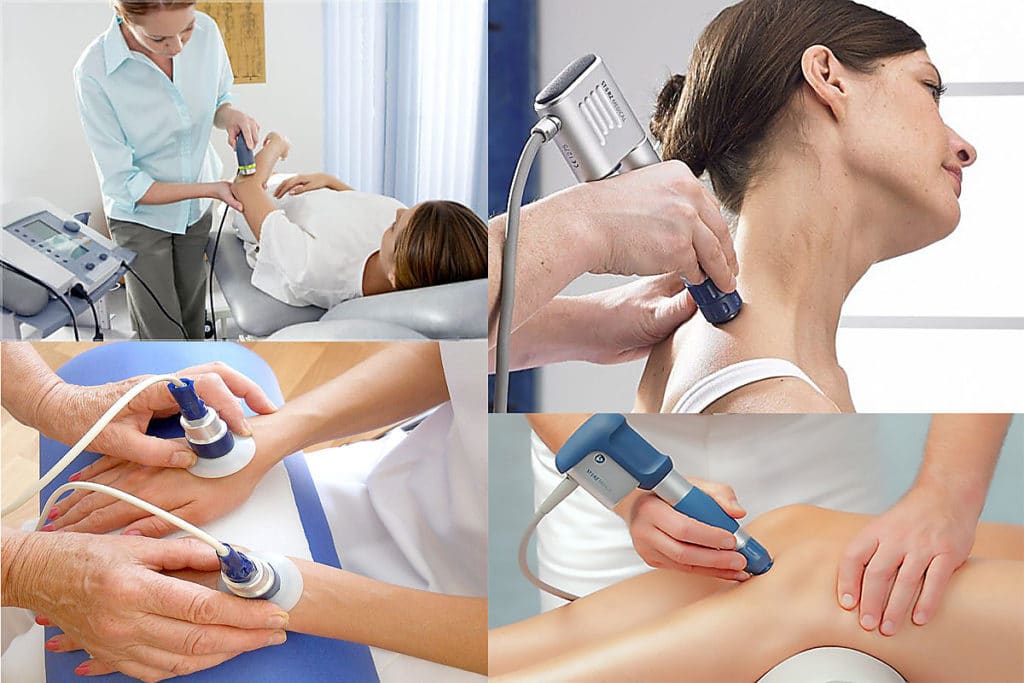
1. What is physiotherapy? – a medical discipline for restoring and improving motor function.
2. Goal: pain reduction, improving mobility, strength, and quality of life.
3. Methods: exercise therapy, massage, electro-, magnetic-, ultrasound-, and heat therapy.
4. A physiotherapist is a specialist who assesses the patient’s condition and creates an individualized rehabilitation plan.
5. Indications: injuries, strokes, surgeries, arthritis, scoliosis, cerebral palsy, and chronic pain.
6. Prevention: helps prevent postural disorders, contractures, and decreased activity.
7. Drug-free: based on natural physical factors: movement, heat, electricity, water, and light.
8. Individualized approach: the program is tailored to the patient’s age, diagnosis, and fitness level.
9. Modern technologies – Robotic exercise machines, kinesio taping, VR, biofeedback, laser therapy.
10. Regularity – the effect is achieved only with systematic training and adherence to recommendations.
In rehabilitation, physiotherapists typically combine different methods depending on the treatment goal, diagnosis, and patient condition. Here are the most common physiotherapy methods most often used in recovery after injuries, surgeries, or illnesses:
🏃♀️ 1. Physical therapy (PT)
The main component of rehabilitation.
Includes specific exercises to restore strength, mobility, coordination, and posture.
Can be active (the patient performs them independently) or passive (the therapist assists with limb movement).
💆 2. Massage
Improves circulation, reduces muscle spasms and pain.
Used after injuries, for neuralgia, osteochondrosis, and postural disorders.
3. Electrotherapy
Uses electric current to stimulate muscles and nerves.
Examples: electrophoresis, darsonvalization, TENS (transcutaneous electrical nerve stimulation).
4. Heat Therapy
Uses heat (paraffin, ozokerite, infrared radiation) to reduce pain and spasms.
Promotes muscle relaxation and improves blood flow.
5. Cryotherapy (cold treatment)
Used to reduce swelling and inflammation after acute injuries.
Examples: ice, cold compresses, cold air devices.
6. Hydrotherapy (water treatment)
Uses water of varying temperatures and pressures: baths, showers, underwater massage.
Relieves stress on joints, helps with arthritis, cerebral palsy, and balance disorders.
🔊 7. Ultrasound Therapy
Uses sound waves for deep tissue heating.
Reduces inflammation and promotes healing of muscles, ligaments, and tendons.
💡 8. Laser Therapy
Stimulates microcirculation, tissue regeneration, and reduces pain.
Used for chronic inflammation, injuries, and arthritis.
🧍♂️ 9. Kinesio Taping
Application of special elastic bands (tapes) to support muscles and joints without restricting movement.
Reduces pain, improves stability, and accelerates recovery.
🤖 10. Mechanotherapy and Robotic Rehabilitation
Use of exercise equipment or robotic systems to restore limb movement after injuries, strokes, etc.
Physician of Physical and Rehabilitation Medicine (PRM) Natalia Ignatova
Addition information:
Leave your email
and we will contact you soon